Introduction
A utility bench, or a bench without an attached rack, is a key piece of a home or commercial gym. You can slide them into a power rack, do dumbbell work or do other exercises like pullovers that don’t need a rack.
In another article I described why you should get some kind utility bench like this, rather than an olympic bench.
But the question now is, should you get a flat utility bench or an adjustable flat/incline/decline (FID) bench?
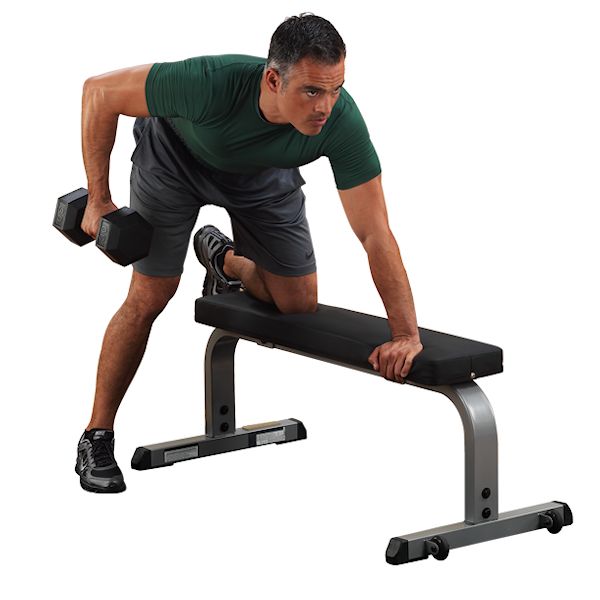
The difference is the adjustable one is composed of two pads – the seat pad and back pad, which allows the back portion to be swiveled up at an angle for doing incline or decline presses.
Your first instinct may be to get a FID bench. After all, that means you can do more exercises, right? Sure, that point is hard to argue with. You can add incline and decline presses to your routine. But consider these points…
Table of Contents
The dreaded pad gap
When the back pad (and sometimes the seat pad) is adjustable, there’s usually going to be a gap between the pads when it’s in flat position, and an even bigger gap in decline position.
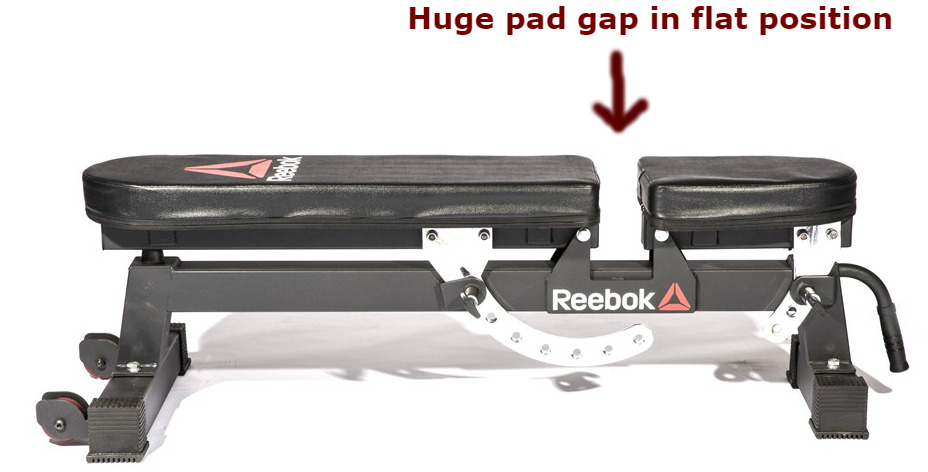
The basic reason for the gap is the back pad needs room to travel into the incline position without running up against the seat pad. So the problem here is depending on the way you lay on the bench and how much arch your lower back has, you are going to feel the gap somewhere on your body and you’re not going to like it.
Some good designs minimize the gap pretty well, but it’s hard to eliminate it. What I used to do was stick a rolled-up hand towel in the gap. Hey, it works.
The Ironmaster Super Bench Pro is one adjustable bench design that literally eliminates the pad gap.
The backrest wobbles
The adjustability may mean it also moves in ways you would rather it didn’t. Higher-end benches that are made to be firm and stable are better at avoiding this, but the backrest on lower end models may wobble a bit from side to side just because there’s a little play in the way it’s engineered so it can pivot up and down.
A flat bench is completely solid, no moving parts. There’s nothing like the stability of a rock-solid flat bench underneath you when you’re doing max attempts.
The leg hold downs interfere with your legs
A bench that adjusts to decline will need leg hold-downs you put your knees and ankles around so you don’t slip down the bench (as I learned one day and slid right off the bench). Great, so now you have something in the way of your legs if you want to press in flat position. So it better be removable, or you better want to spread your knees that much.
This is perhaps one reason why there are so many flat/incline only benches (no decline) – Without decline, there’s no need for the leg hold downs that can get in the way.
They’re too tall
Adjustable benches are built with the bench pad about 20″ or higher off the floor when in flat position, which is higher than optimal for most users.
Why do they do this? Well, two reasons…
The first reason is to give enough height to let the back rest tilt down for a steep enough declined angle (for benches that include a decline option). This still accomplishes only about a 20 degree decline, which is about what users want. A shorter bench would only give room for maybe a 15 degree decline.
The second reason is to keep your feet high off the ground for doing leg extensions. This unfortunately detracts from the best bench design; that is, you want your feet to easily reach the floor with your knees at the same level as your body so that you can get firm footing. Most users do well with a 17-18″ high bench.
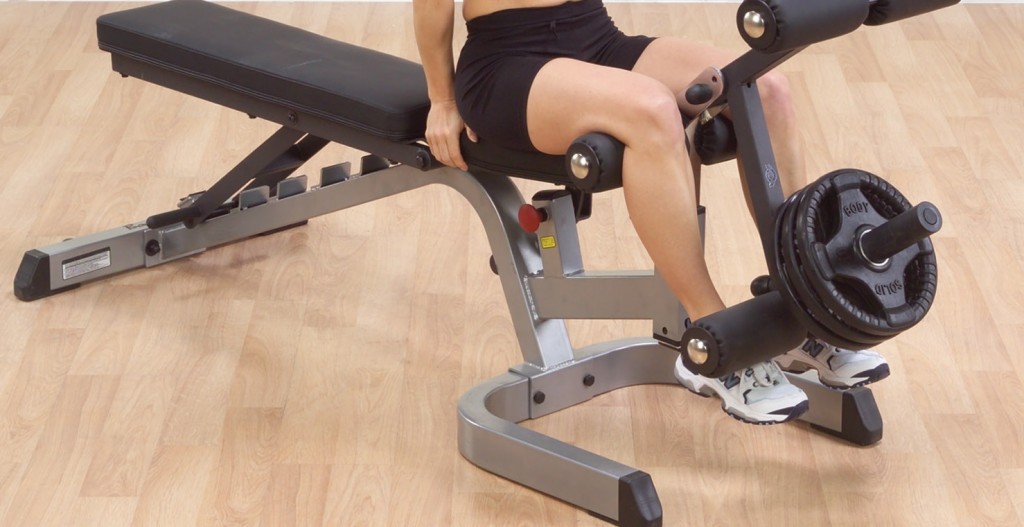
Her feet won’t touch the floor easily with this bench, and she won’t plant her feet well with the U-shaped frame in the way.
You can’t trust the bench’s safety as much
Your level of confidence in the design and your assembly skills come into play when it comes time to hold a heavy loaded barbell over your face on a FID bench and its myriad of bolts and moving parts.
Is that pop pin all the way in, to stop the backrest from falling back?
Did you tighten all the bolts enough when assembling?
Is there a small part that’s going to fail under enough weight?
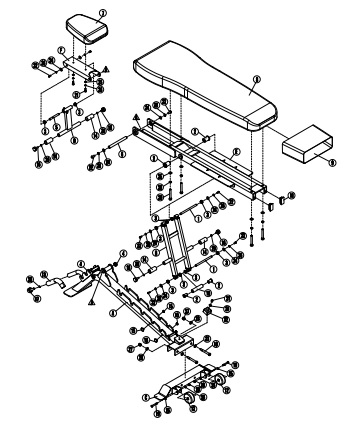
On the other hand, if a flat bench feels solid at first, it almost certainly is, and there’s not much that can happen to it. The entire main frame is a solid piece of steel, with the feet and backboard bolted on. Some flat benches like the Rogue Flat Bench 2.0 are 100% welded, no assembly required.
Huge difference in price
Engineering a flat bench is not rocket science. It’s been done, it’s been copied, and the good ones are all pretty similar. It’s easy to find a fantastic flat bench for $100-150.
On the other hand, you’re going to pay $300 for a good adjustable bench that feels solid, is safe, and is easy to adjust.
You don’t actually need incline or decline, you just think you do
Now I’m not arguing that there is no use at all for incline or decline presses.
But consider: in this stage of your training, what ever your goals are, do you really need a bench that can do incline and decline? You can do seated overhead presses without back support, or standing overhead presses if your ceiling height allows. A flat bench may just serve you better.
So my advice is to get a flat bench to start out with. At some point in your training if you really have the itch for an adjustable bench, get it, but you’ll find you will want to keep your flat bench too, and you will be hard pressed to ever get rid of it.

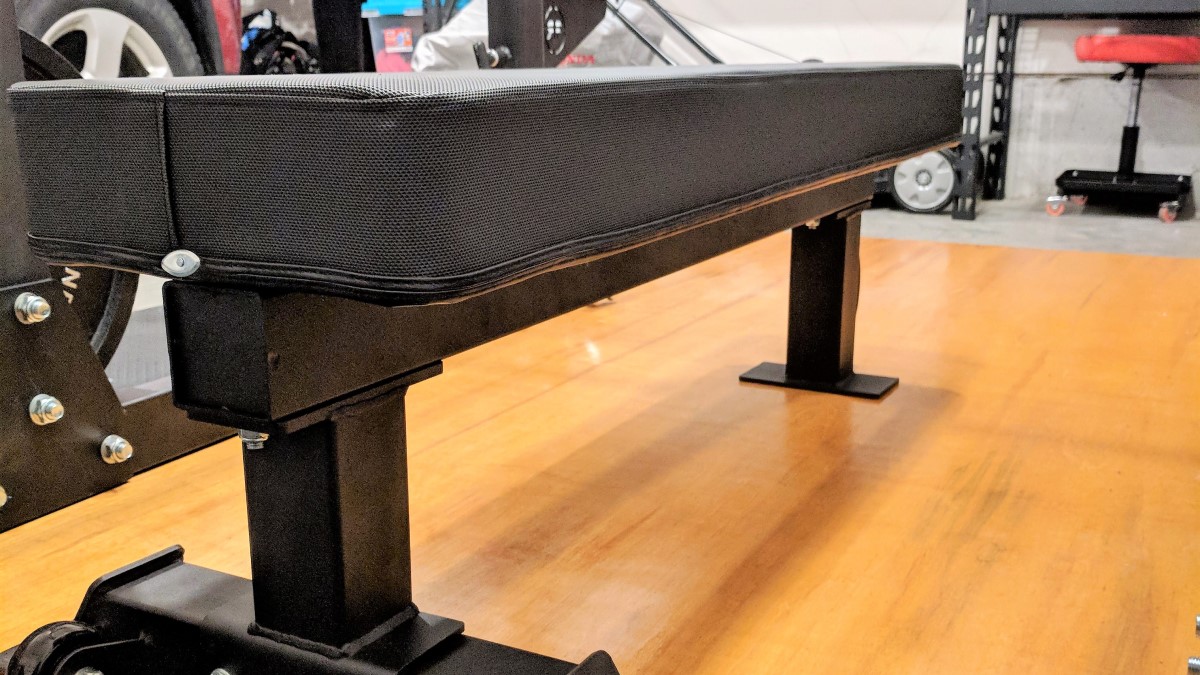
What do you think of this no gap bench?
https://www.amazon.com/Fitness-Reality-14-Position-Adjustable-Weight/dp/B091G8134K/ref=b2b_gw_d_simh_2/146-7118260-0336918?pd_rd_w=CUMdv&pf_rd_p=242a823a-6b50-499e-af36-ebf9ec072baa&pf_rd_r=WGGPBCHPJXK0R70PAGP3&pd_rd_r=0636100b-f629-421f-b5b6-5e2a23dd190f&pd_rd_wg=PvvJe&pd_rd_i=B091G8134K&psc=1
It might do the job well enough. Not a great bench by my standards, but you’d be looking at more like $300 for something I’d say is good. It might be rickety or otherwise not feel as stable or solid. The front feet splay out in a way where you can’t plant your feet where you want. It’s 20″ high which is too high for most people in flat position.
Awesome article! Thanks. You solved my dilemma of whether I should get a flat or adjustable bench for “versatility”. I’m going simple – flat.
Good choice! Things get more complicated anyway, and you might as well try to keep it simple to start!
The words “versatility” and “flat bench” don’t stack together. Like I’m only lifting for two months and I believe it was a mistake buying a flat bench. Now I need to spend another wad of cash to get another bench. This time an adjustable one. Exactly for “versatility” because I found out that I really need that incline while doing reverse flies (it’s no fun swaying dumbbels while bending over, my spine doesn’t thank me for that) and I need back support for another bunch of sets of overhead presses. Like I start three sets of OHP for compound and then another three sets seated and isolated. Because again, six sets of OHP is no good for my spine (blah-blah, your form is bad, of course it’s bad once you tired, so having a back support eliminates that bad form for those last sets)
I’m lazy & cheap, so to make my flat bench into an incline/decline bench, I stack several pieces of scrap lumber under 1 end or the other. Works fine, takes up no extra space, cost $0 & it’s not rattly/wobbly & too tall, as most of the FID benches are. But it looks ghetto & takes an extra minute to set up–everything’s a trade-off.
No issue with the feet not sitting flat when tilted up like that?
When I’m inclined, my feet are flat on the floor because the boards are under my head. When I’m declined, my feet are flat on the boards. It looks like this:
sorry it’s sideways, IDK how to fix it
Would like it to be foldable.
Thanks for the comments! As far as a foldable flat bench, Rogue makes the only one I know of offhand that might be good.
https://www.roguefitness.com/rogue-fold-up-utility-bench
It came out this year. The hinges could potentially introduce some wobble. Hopefully Rogue designed it tight to eliminate any wobble like they did with their adjustable bench, from what I’ve heard.
Thanks David
I’ve been researching for a couple of weeks and I finally found in you some “non sponsored” opinions. The less moving parts the better for stability. The low to mid level ABs look as sturdy as an ironing board. Now that my suspicions have been confirmed, it’s a solid, good quality FB for me.
Sorry, I just saw this! I hope what ever flat bench you got is working out well.
David,
You forgot another drawback of the FID bench: Watch the height. Usually, to allow clearance for the mechanism to raise and lower the back, they are hugely tall.
Ah, thanks for that, John! I will have to revise it to “7 ways”. A lot of those FID benches are also made to take a leg extension attachment, which requires that the front of the bench be high enough off the floor to the user’s feet clear the ground… which is the opposite of what you want for presses, as you noted.
Of course I agree Utility bench is better than FID bench. Because of I use Utility bench. Also utility bench price is very low.